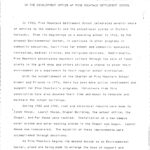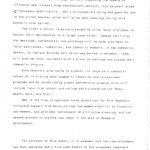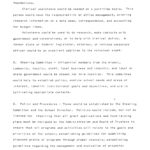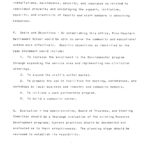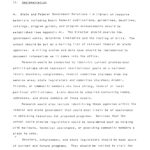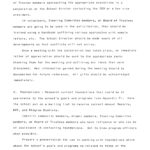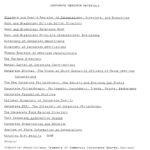Pine Mountain Settlement School
Series 06: Administration – General and Financial
Development Plans – ADMIN GENERAL Correspondence Internal 1983
Government and Corporate Relations Component
ADMIN GENERAL Correspondence Internal 1983
Government and Corporate Relations Component
TAGS: Pine Mountain Settlement School governance, corporate components, development, administration, education, environmental education, alumni and friends volunteers, fund raising, foundations, historical preservation
TRANSCRIPTION: Government and Corporate Relations Component
[NOTE: **Source unknown. The text has been slightly edited.]
Page 1
ESTABLISHING A GOVERNMENT AND CORPORATE RELATIONS COMPONENT
IN THE DEVELOPMENT OFFICE AT PINE MOUNTAIN SETTLEMENT SCHOOL
In 1983, Pine Mountain Settlement School celebrated seventy years of service to the community and the educational system of Eastern Kentucky. From its beginnings as a boarding school in 1913 to the present Environmental Center, it continues to offer programs in community education, facilities for school and community-sponsored recreation, medical clinics, and religious services. Additionally, Pine Mountain perpetuates mountain culture through the sale of local crafts in the gift shop and offers children a chance to study their environment as a supplement to their regular school curriculum.
With the establishment of the Charter of Pine Mountain School Alumni and Friends in 1976, there has been more active involvement and support for Pine Mountain’s programs. Volunteers from this association have also donated their time and money to renovate and maintain the school buildings.
During 1982 and 1983, roof and structural repairs were made to Zande House. Laurel House, Draper Building, the school Office, the Chapel, and Far House were rewired. Installation of a new campus water system and solar heating system in the Chapel was begun. Laurel House was redecorated. The majority of these improvements were accomplished through donations.
As Pine Mountain begins its second decade as an Environmental Center, plans are being made to enlarge the base of support and
Page 2
increase the enrollment through actively expanding the sphere of influence and interest from southeastern Kentucky into adjacent areas of Tennessee and Virginia. New curriculums are being designed for use in the winter months, which will allow more bookings during this normally slow period.
The craft’s outlet is being expanded to allow local craftsmen to market their merchandise to a larger population. Campus facilities for meetings, conferences, and workshops will be made available to local businesses, industries, and community members. A new Community Center, to replace Burkham Hall which was burned in November 1983, will provide local residents with a place to continue and expand their community affairs.
Pine Mountain also wants to promote its image as a community school by initiating more community education and recreational programs and by establishing a work partnership program which will include local high school and college participants called “Earn, Learn, Work, and Play.”
Now is the time to approach these objectives for Pine Mountain. Increased support from Berea College has added stability to financial advisement, has provided improvement of curriculum planning, and has opened avenues to explore new ideas in the area of Resource Development.
For purposes of this paper, it is assumed that the case statement has been approved and a firm commitment of the proposed component
Page 3
has been made by the School Director and the Board of Trustees.
I. Planning Stage
A. Funding – This component could be funded through obtaining a grant from a foundation or corporation. Individuals or corporations could also be approached to donate stocks, real estate, or cash pledges. The component could be included in the annual budget and a specific endowment could be established to ensure perpetual funding.
B. Office Budget – The cost of a Development Office with 1-2 staff members would require a budget of $25,000-$125,000 annually, with approximately $50,000 being a realistic amount for the first year. Items to be included: Director: clerical; fringe benefits; consultant fees; supplies; postage; telephone; copying; newsletter costs; travel; catalogs and reference materials; entertainment; promotional materials; office space: office equipment and membership and association fees. Many of these costs would be in-kind donations, such as Director and office space.
C. Staff – The School Director could head the component with a faculty or administrative staff person appointed in a half-time release capacity. This person would be responsible for researching all materials coming into the office and coordinating it with school objectives and programs. Ideally, this person would have knowledge of grant procedures, know the institution, and have had previous
Page 4
experience with local, state, and federal government, corporations and foundations.
Clerical assistance would be needed on a part-time basis. This person would have the responsibility of office management, entering research information on a database, correspondence, and accounting for budget items.
Volunteers could be used to do research, make contacts with government and corporations, or to help with clerical duties. A former state or federal legislator, attorney, or retired corporate officer would be an excellent addition to the volunteer staff.
D. Steering Committee – Influential members from the Alumni, community, faculty, staff, local business and industry, and local or state government would be chosen for this function. This committee would help to establish policy, analyze school needs and areas of interest, identify institutional goals and objectives, and aid in cultivating appropriate contacts.
E. Policy and Procedures – These would be established by the Steering Committee and the School Director. Policies would include, but not be limited to: requiring that all grant applications and fundraising plans must be reviewed by the Administration and Board of Trustees to ensure that all programs and activities will relate to the goals and priorities of the school; establishing guidelines for submitting proposed grants or programs through proper channels; establishing guidelines regarding the management and evaluation of projects;
Page 5
establishing procedures regarding the purchase of equipment, installations, maintenance, security, and insurance as related to individual projects; and encouraging the support, initiative, equality, and creativity of faculty and staff members in obtaining resources.
F. Goals and Objectives – By establishing this office, Pine Mountain Settlement School would be able to serve the community and educational system more effectively. Specific objectives as identified by the Case Statement would include:
- To increase the enrollment in the Environmental program through expanding the service area and implementing new curriculum offerings.
- To expand the craft’s outlet market.
- To promote the use of facilities for meetings, conferences, and workshops by local business and industry and community members.
- To initiate a work partnership program.
- To build a community center.
G. Evaluation – the Administration, Board of Trustees, and Steering Committee should do a thorough evaluation of the existing Resource Development programs. Current practices should be documented and evaluated as to their effectiveness. The planning stage should be reviewed to establish its feasibility.
Page 6
II. Implementation
A. State and Federal Government Relations – A library of resource materials including basic federal publications, guidelines, deadlines, catalogs, program guides, and program announcements should be established (see Appendix A). The Director should analyze how government works, determine timetables and the routing of bills, The school should be put on a mailing list of relevant federal or state agencies. A filing system and database should be implemented to document information as it comes into the office.
Research would be conducted to identify: current professional affiliations which represent institutional goals on a national level; senators, congressmen, federal committee chairmen from the service area; state legislators and committee chairmen; Alumni, friends, or community members who have strong, federal or local political affiliations. Lists should be compiled containing names, addresses, and phone numbers of these people.
Research would also include identifying those agencies within the federal and state government that would most likely be of assistance in obtaining resources for proposed programs. Services that the school could provide legislators would be considered such as helping with mailouts, technical assistance, or providing community members a place to vote.
Senators, congressmen, and state legislators should be made aware of current and future programs. They should be invited to visit the
Page 7
school to meet with the Administration and see the campus facilities.
C. Corporate Relations – Research should be conducted to establish a list of state [and] local businesses and industries (See Appendix B) and to evaluate potential corporate support (see Appendix C).
Prepare a special Case Statement designed only for the corporate community emphasizing the economic and cultural impact of the school and community, the school’s job opportunities and total payroll, the school’s budget for purchasing local materials and services, and the leadership and influence that the school provides in the community,
Prepare a presentation that can be used for corporate solicitation. Include: concise statement of the school’s overall program; annual report showing history, accomplishments, and leadership; recent financial statement; proof of tax-deductibility for contributions – copy of original Treasury Department (IRS) statement or letter; approval of recognized accrediting groups or associations; rationale for corporate support (see Appendix D); the objectives to be met with corporate support; a summary of corporate gifts obtained to date; specific suggestions as to the resources the school is seeking (see Appendix E); and how school needs [to] correlate with corporation interests. This presentation should be limited to no more than fifteen minutes and varied depending upon the organization or corporation involved.
Contacts with corporations can be formal or informal, spontaneous or planned, written or oral but in order to be effective corporate support must be actively sought out with an overall plan.
Page 8
Solicitation should be approached on a peer-to-peer basis with Board of Trustee members approaching the appropriate executives in a corporation or the School Director contacting the CEO or a key vice president.
If volunteers, Steering Committee members, or Board of Trustees members are going to be used in the solicitation, they should be trained using a handbook outlining various approaches with sample letters, etc. The School Director should be made aware of all developments so that conflicts will not arise.
Once a meeting with the corporation has taken place, an immediate letter of appreciation should be sent to the appropriate party thanking them for the meeting and outlining any ideas that were discussed. Any information gained during the meeting should be documented for future reference. All gifts should be acknowledged immediately.
D. Foundations – Research current foundations that could be of assistance to the school’s goals and programs (see Appendix F). Have the school put on a mailing list to receive current Annual Reports, RFP, and Program Booklets.
Identify community members, Alumni members, Steering Committee members, or Board of Trustees members who have influence or who can be of assistance in contacting foundations. Get to know program officers when possible.
Prepare a presentation for use in working with foundations which shows the school’s goals and programs as related to those of the
Page 9
foundation. Train volunteers to assist in approaching foundations. Follow up any contact with foundations with notes for future reference and a letter of appreciation.
III. Evaluation
Constantly evaluate the school’s Resource Development program. Note the positive and negative approaches. Update information on a planned basis. Be realistic when considering the number of programs that can be initiated and the number of contacts that can be made.
Page 10
APPENDIX
Page 11
APPENDIX A
FEDERAL, STATE, AND LOCAL GOVERNMENT RESOURCE MATERIALS
Successful Government Relations CASE
How Washington Really Works
Doing Business in Washington
Congressional Yellow Book
Federal Yellow Book
The Almanac of American Politics
Congressional Record
Federal Register
Catalog of Federal Education Assistance Programs
Catalog of Federal Domestic Assistance
Handbook of Federal Assistance: Training, Grants, Technical Aids
Page 12
APPENDIX B
CORPORATE RESOURCE MATERIALS
Standard and Poor’s Register of Corporations, Directors, and Executives
Dunn and Bradstreet Million Dollar Directory
Dunn and Bradstreet Reference Book
Dunn and Bradstreet Principle International Businesses
Directory of Corporate Advertisers
Directory of Corporate Affiliations
Thomas Register of American Manufacturers
The Fortune Directory
Annual Survey of Corporate Contributions
Corporate Giving: The Views of Chief Executive Officers of Major American
Corporations
The New Corporate Philanthropy: How Society and Business Can Profit
Corporate Philanthropy: Philosophy, Management, Trends, Future, Background
Corporate Foundation Profiles
National Directory of Corporate Charity
Corporate 500: The Directory of Corporate Philanthropy
The Corporate Fund Raising Directory
Taft Corporate Information System
Corporate Organization and Behavior
Sources of State Information on Corporations
Matching Gift Details CASE
Others:
Industrial Associations; Chambers of Commerce; Conference Boards; National Association of Independent Business; Business Journals; daily newspapers; corporation newsletters.
Page 13
APPENDIX C
POTENTIAL CORPORATE SUPPORT
Evaluate Potential Corporate Support
- Study school programs and needs and determine which ones can best be related to corporate interests.
- Determine current economic situation for each corporation.
- Determine giving patterns of the Corporation.
- Determine personal contacts which the school might have with key corporate executives.
- Identify geographic proximity of service area.
- Determine services that the school can provide corporations.
- Determine other factors or past history which establishes a closer identification between the school and individual corporations.
- Determine if any Alumni members qualify for matching gifts from their employers.
Page 14
APPENDIX C page 2
CORPORATE DATA FORM
CORPORATION NAME:
ADDRESS: CITY: STATE: ZIP:
TELEPHONE NUMBER:
MAJOR PRODUCTS PRODUCED:
PLANT LOCATIONS: PRIMARY LOCATIONS:
EARNINGS RECORD:
SIZE OF CORPORATION:
CORPORATE STRUCTURE:
NAMES OF KEY LEADERS:
BOARD OF DIRECTORS CHAIRMAN:
PRESIDENT :
SENIOR OFFICERS:
NAMES AND AFFILIATIONS OF EACH MEMBER OF BOARD OF DIRECTORS:
Page 15
APPENDIX C page 3
DATES OF KEY MEETINGS:
WHEN ARE BUDGETS PREPARED:
PRESENT CONTRIBUTIONS TO OTHER INSTITUTIONS:
CONTRIBUTIONS GIVEN TO OTHER INSTITUTIONS SIMILAR TO PINE MOUNTAIN:
POSSIBLE CONTACT PEOPLE AFFILIATED WITH SCHOOL:
TYPES OF CORPORATE GIVING PROGRAMS:
ANNUAL REPORTS:
NEWS CLIPPINGS, ARTICLES, OTHER INFORMATION OR COMMENTS:
Page 16
APPENDIX D
RATIONALE FOR CORPORATE GIVING
- Investing in Pine Mountain is an opportunity to invest in people who will shape the country’s future.
- With declining federal funding corporation’s support of education contributes to the preservation of institutional freedom by providing an alternative source of funding. This belief enhances the freedom and flexibility of the school to pursue the goal of quality in all activities.
- Corporate support is a necessary social responsibility and one of the necessary costs in doing business. It promotes a positive public relations value in being associated with successful programs that are responsive to the community.
- Corporate support is one way of advertising.
- Corporate giving is an opportunity to invest in the future of children and preserve the free enterprise system.
- Local business and industry depend upon the community for their workforce and as a market place for their goods.
- Solicit funds for special purposes, programs, equipment or financial aid for students. A foundation could be established especially for the distribution of corporate funding.
- The school serves the business community by purchasing goods and services.
Page 17
APPENDIX E
SUGGESTIONS FOR RESOURCES
Resources for the new community building could include:
Cash Pledges
Furniture
Technical Assistance
Volunteer Employees
Gifts of Real Estate
Equipment
Planning Assistance
Laborers
Resources for on-going operation of programs could include:
Cash Pledges
Copying
Printing
Shipping
Hauling
Advertising
New or Used Equipment
Computer Instruction
Co-operating Purchase Agreements
Furniture
Low Interest Loans
Construction
Audi-Visual Services
Employee release time for auditing, bookkeeping, or accounting
Gifts of Real Estate
Phone
Postage
Transportation
Student Scholarships
Public Relations
Computer Time
Computer Training
Office Supplies
Legal Advice
Repairs
Renovations
Intern for Work Program
Page 18
APPENDIX F
FOUNDATION RESEARCH SOURCES
The Foundation Grants Index
The Foundation Directory
Foundation News
Grantsmanship Center News
Taft Trustees of Wealth
Fund Raising institute Newsletter
National Data Book
Foundation News
The Grants Register
Foundation Grants to individuals
The_Grants Register
Grants in the Humanities: À Scholar’s Guide to Funding Sources
Annual Register of Grant Support
Have name added to mailing lists: National Science Foundation; National Endowment for the Arts; National Endowment for the Humanities; Office of Education
GALLERY: Government and Corporate Relations Component
- Development Planning 1985, page 1. [image00001-scaled.jpg]
- Development Planning 1985, page 2. [image00002-scaled.jpg]
- Development Planning 1985, page 3. [image00003-scaled.jpg]
- Development Planning 1985, page 4. [image00004-scaled.jpg]
- Development Planning 1985, page 5. [image00005-scaled.jpg]
- Development Planning 1985, page 6. [image00006-scaled.jpg]
- Development Planning 1985, page 7. [image00007-scaled.jpg]
- Development Planning 1985, page 8. [image00008-scaled.jpg]
- Development Planning 1985, page 9. [image00009-scaled.jpg]
- Development Planning 1985, page 10. [image00010-scaled.jpg]
- Development Planning 1985, page 11. [image00011-scaled.jpg]
- Development Planning 1985, page 21. [image00012-scaled.jpg]
- Development Planning 1985, page 13. [image00013-scaled.jpg]
- Development Planning 1985, page 14. [image00014-scaled.jpg]
- Development Planning 1985, page 15. [image00015-scaled.jpg]
- Development Planning 1985, page 16. [image00016-scaled.jpg]
- Development Planning 1985, page 17. [image00017-scaled.jpg]
- Development Planning 1985, page 18. [image00018-scaled.jpg]

